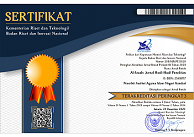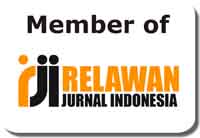Potret Islam dalam Bingkai Kearifan Lokal: Studi Makna Arsitektur Kampung Naga
Abstract
This research aims to describe the form and meaning of house in Naga in term of emic and ethic perspectives. This study focuses on the form and space of house arcithecture as well as the symbolic meaning of house for people living in Naga. The data is generated through a series of interview, participant observation and library research. The research shows that the form of Naga’s house is closely related to their belief in which the world is divided into three, i.e: upper world, middle and the lower one. In addition, that form also reflects their views on the place of men and women within the house. Though separation is required by their tradition, they also provide the neutral room in which male and female could meet together. Their houses also provide the sacred room to reflect the existencse of God within their life. To sum up, those beliefs are, to some extent, in line with the Islamic norms practiced by Muslim in their daily life. Basically, symbols in the house contain universal symbol, except for goah which is believed as Dewi Sri’s room. However, the house’s design, form, and arrangement are quite similar to Islamic architecture with some restrictions states as Islamic portrait within local wisdom framework
Keywords
Islam, Local tradition, Kampung Naga Architecture
Full Text:
PDFDOI: http://dx.doi.org/10.31332/ai.v12i2.644
Copyright (c) 2018 Al-Izzah: Jurnal Hasil-Hasil Penelitian

This work is licensed under a Creative Commons Attribution-NonCommercial-ShareAlike 4.0 International License.










